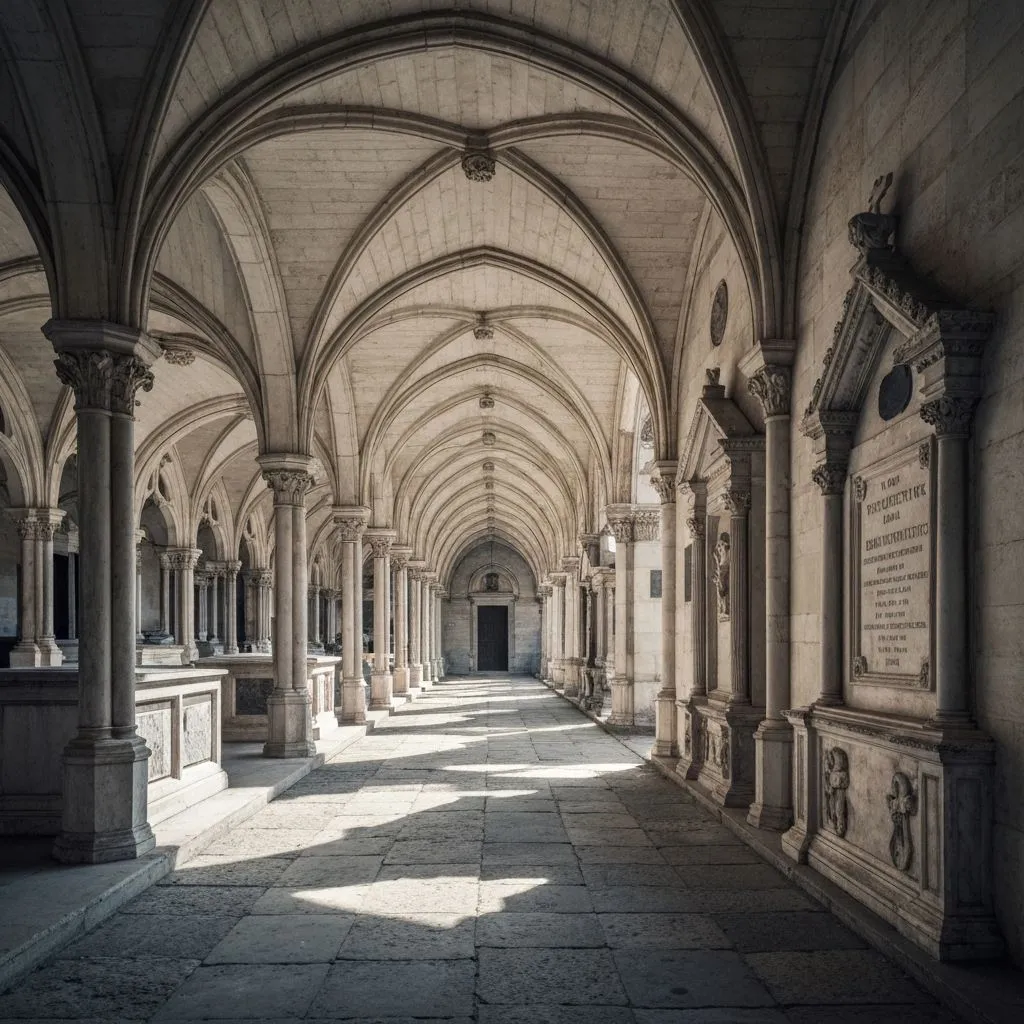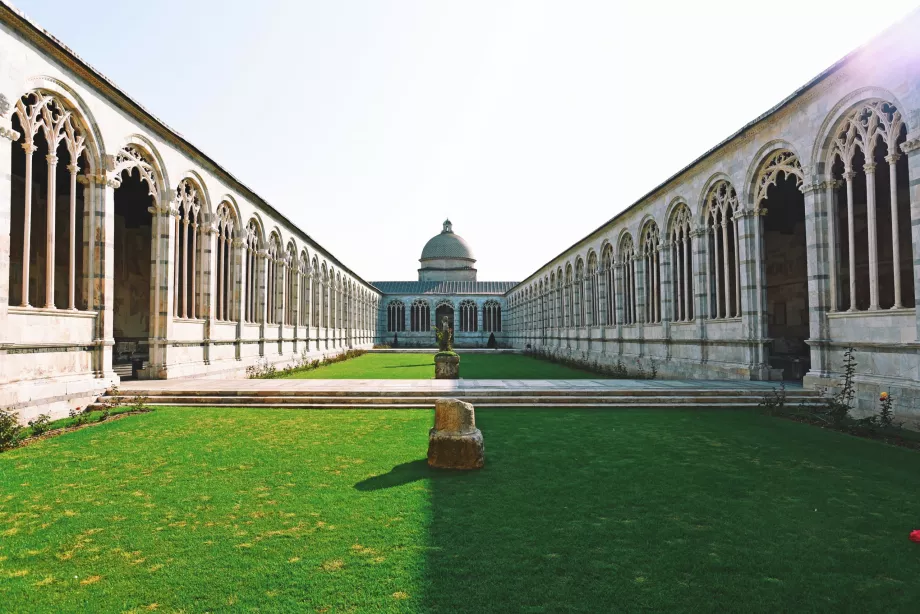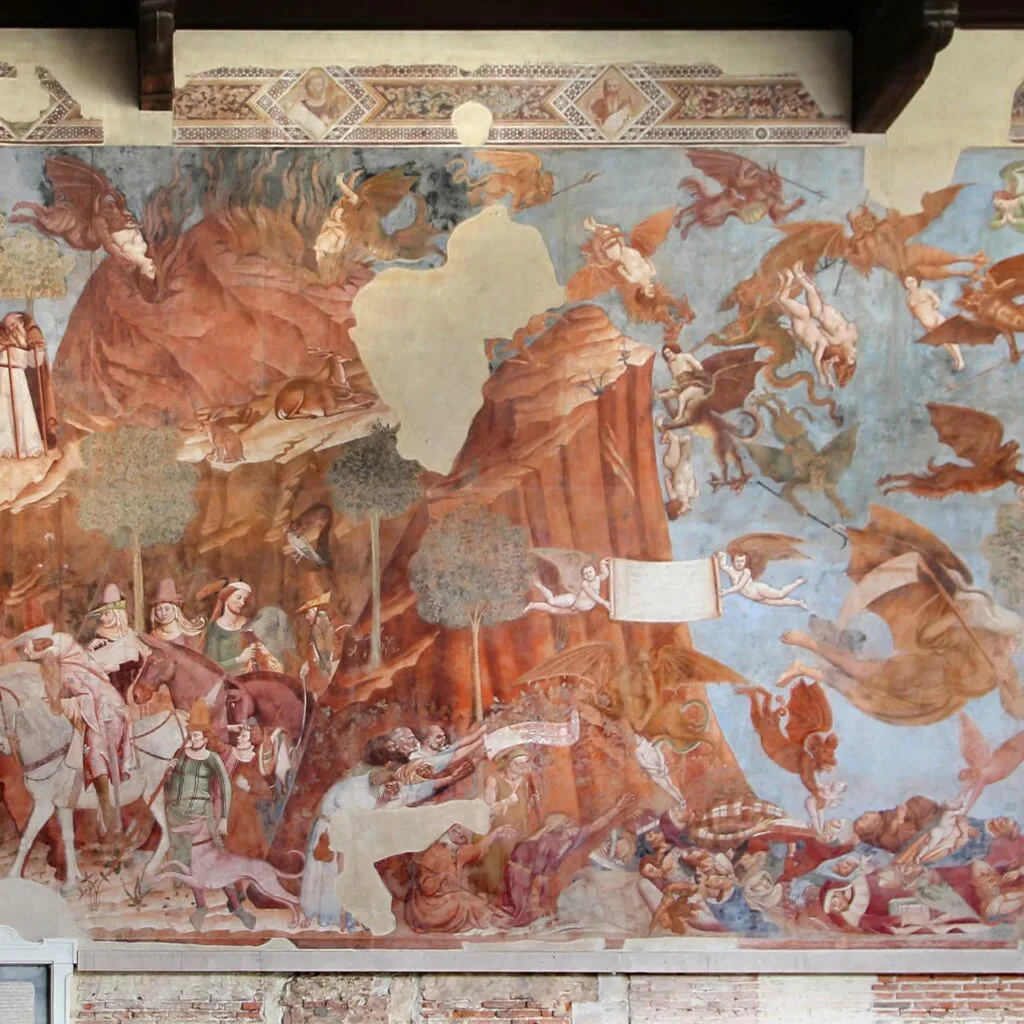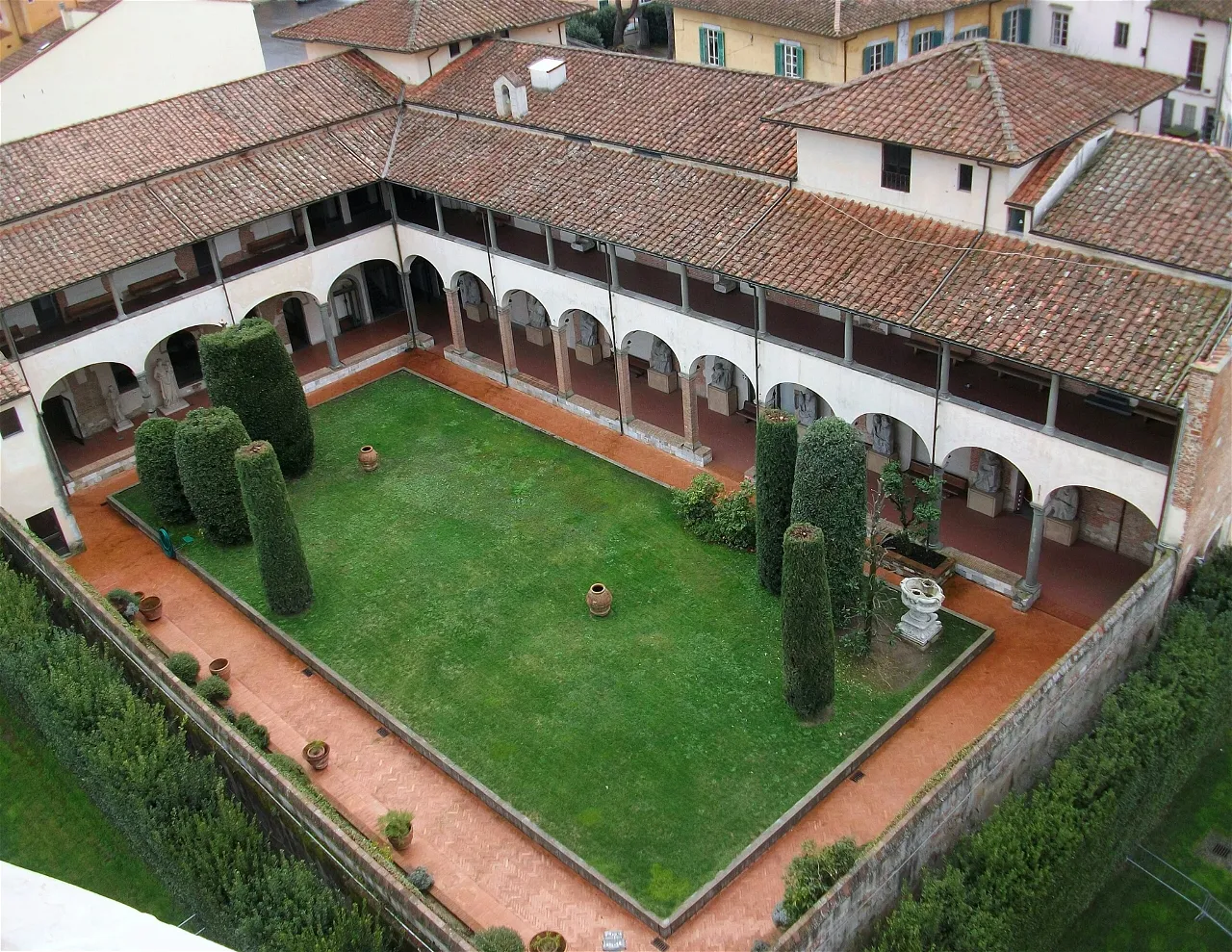Pisa Camposanto – Art, History, and Medieval Frescoes
Explore the Pisa Camposanto, a historic cemetery featuring ancient Roman sarcophagi, medieval frescoes, and serene cloisters at the heart of Piazza dei Miracoli.

The Pisa Camposanto: Cemetery of Art and History
The Camposanto Monumentale, located at the northern edge of Pisa’s Piazza dei Miracoli, is a monumental cemetery renowned not only as a resting place but also as a treasure trove of art, architecture, and history.

Historical Origins
- Foundation: Tradition holds that the Camposanto was founded in 1278 on sacred soil brought from Golgotha during the Crusades, giving it its name “Holy Field.”
- Architectural Design: The cloistered layout, typical of Tuscan cemeteries of the era, creates a peaceful, enclosed space for reflection.
- Purpose: Built to house Pisa’s honored dead, it also became a gallery for important funerary art.
Artistic Highlights
- Fresco Cycles: The interior walls originally contained an extraordinary series of frescoes by medieval masters, depicting religious themes and allegories of death and salvation.
- Roman Sarcophagi: Ancient sarcophagi line the cloister, showcasing Roman sculptural techniques and the continuity of Italian funerary art.
- Architectural Features: Elegant Gothic arches, columned loggias, and vaulted ceilings provide a solemn yet harmonious setting.

Cultural Significance
- Burials of Note: The Camposanto has served as the final resting place for notable Pisans, including civic leaders and prominent scholars.
- Symbolic Art: Sculptures and frescoes embody themes of mortality, virtue, and divine grace, reflecting the spiritual and artistic priorities of medieval Pisa.
- Historical Events: The cemetery suffered damage during World War II, and restoration efforts continue to preserve its delicate frescoes and stonework.
Visiting the Camposanto
- Location: Adjacent to the Leaning Tower, Baptistery, and Duomo, it is central to any tour of Piazza dei Miracoli.
- Guided Tours: Recommended to understand the iconography of the frescoes and the history of the sarcophagi.
- Photography Tips: Soft, diffused light in the cloister enhances the textures of marble and frescoed surfaces.

The Pisa Camposanto stands as a unique fusion of cemetery, museum, and architectural masterpiece, inviting visitors to explore centuries of Italian art, devotion, and history in one serene and sacred space.
About the Author

Dr. Luca Bianchi, Historian
Passionate about history and travel, I created this site to help fellow travelers make the most of their visit to the Leaning Tower of Pisa. With years of experience exploring landmarks worldwide, I share practical tips and insights to enhance your journey.
Tags
Comments (0)
Loading comments...